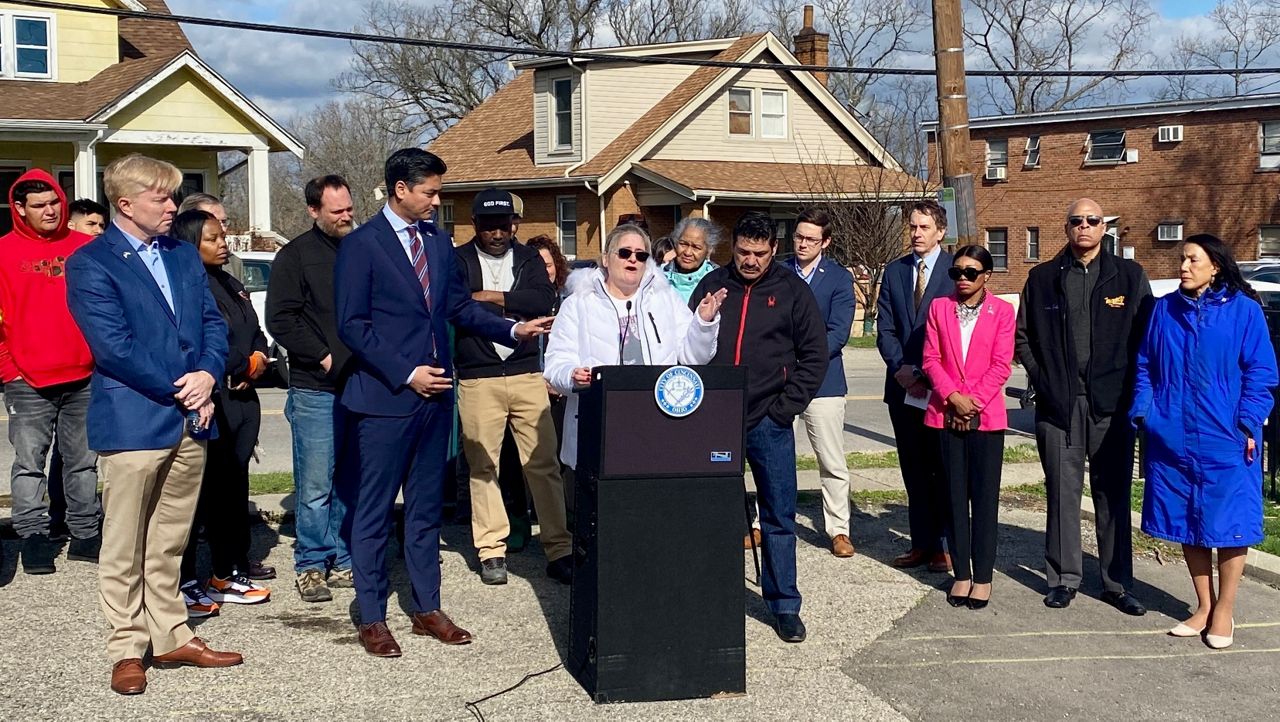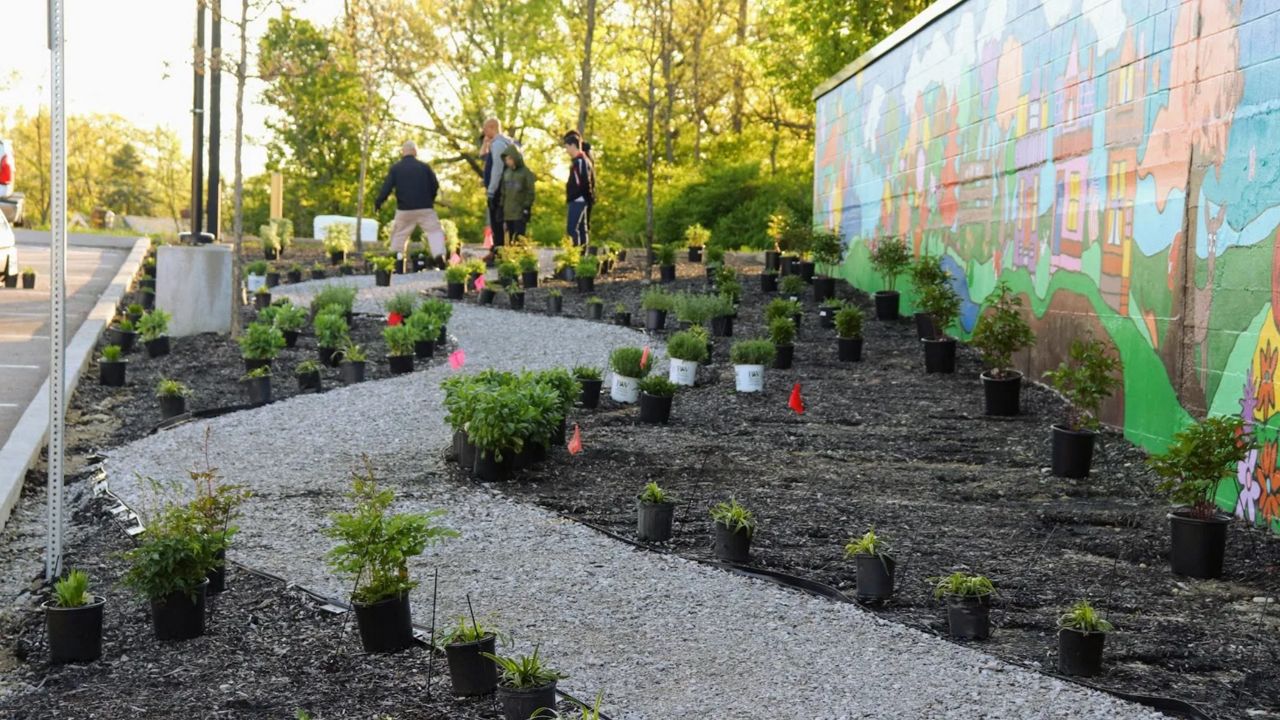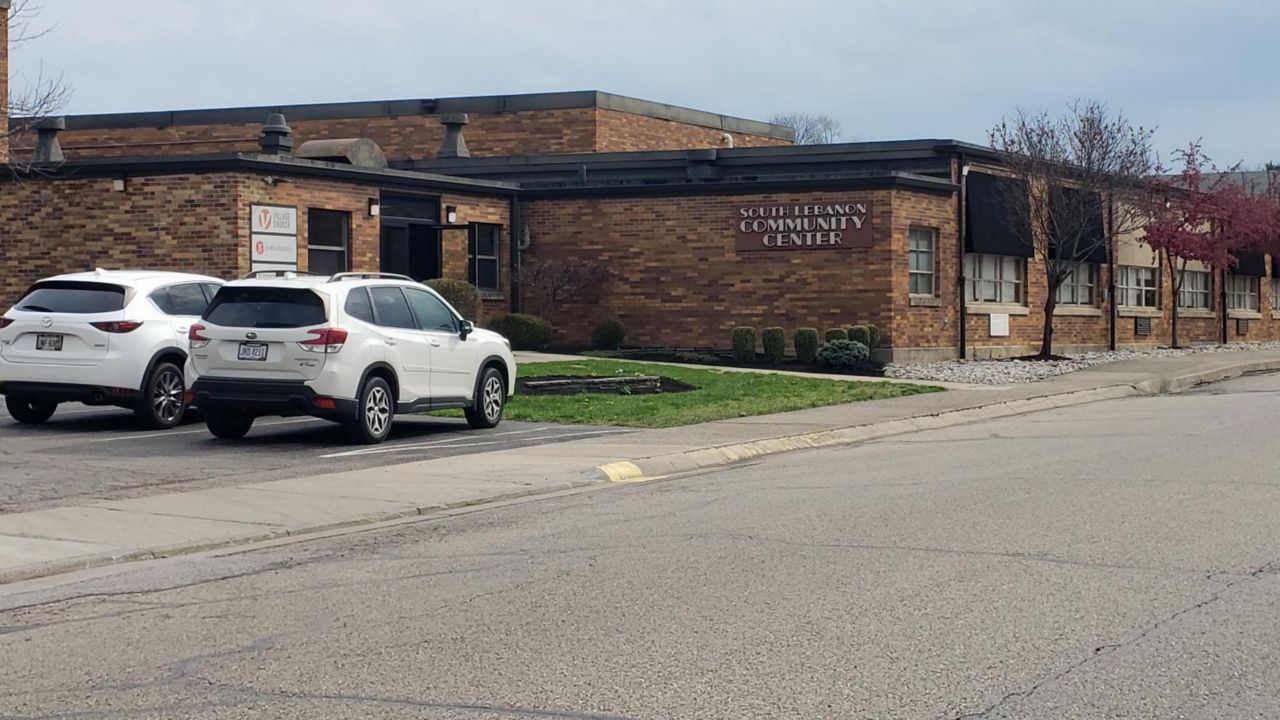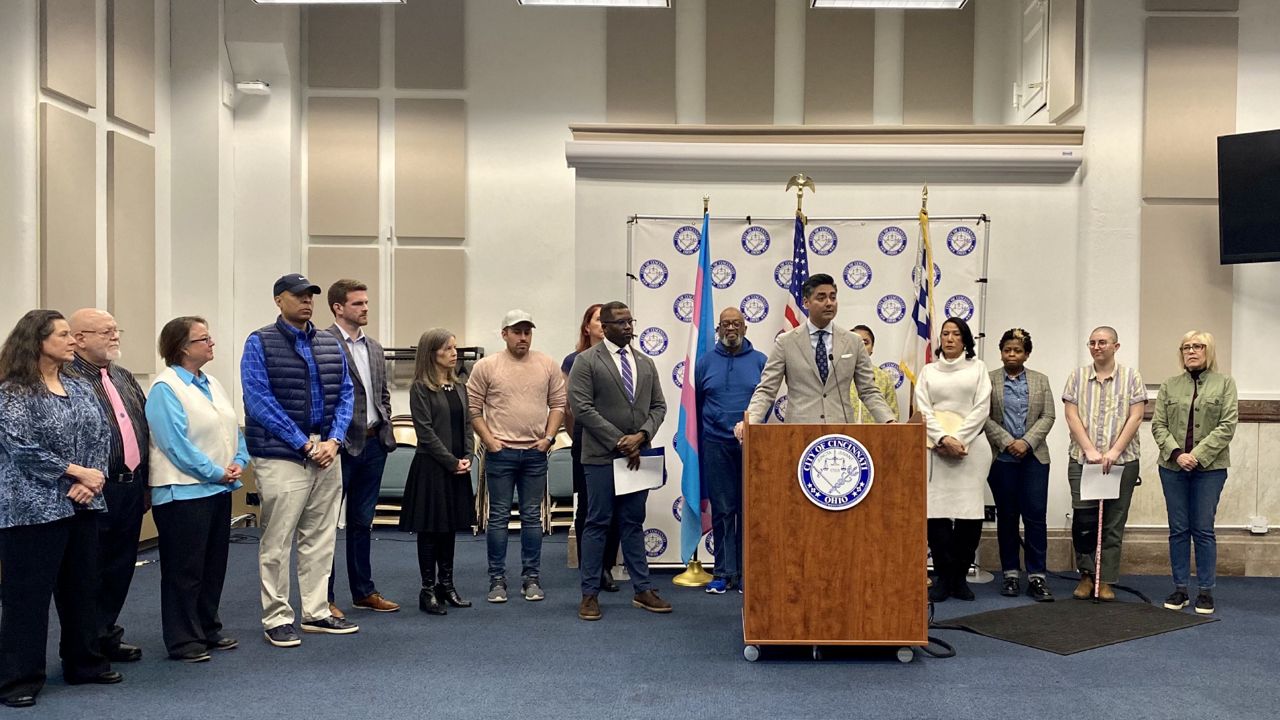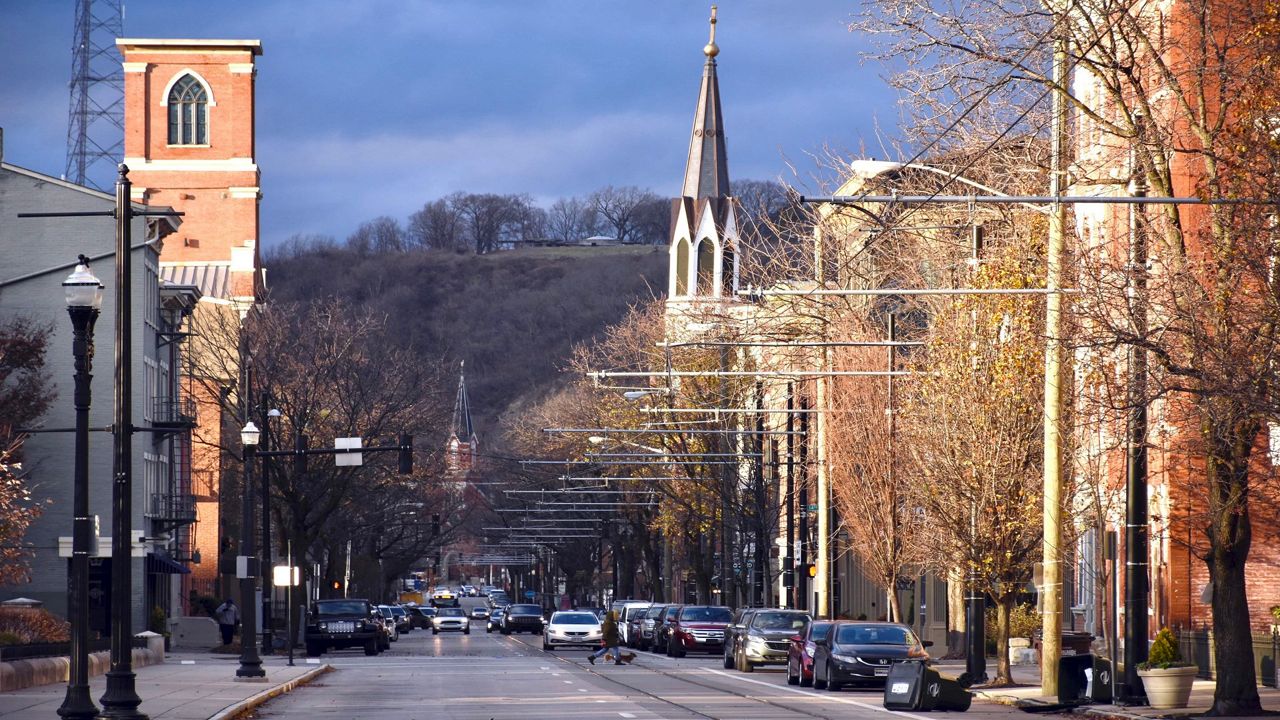CINCINNATI – The City of Cincinnati plans on using $1 million in federal stimulus money to expand a safety program designed to reduce speeding and an “unacceptable” number of pedestrians being struck by motorists.
What You Need To Know
- A new proposal would inject $1 million of federal stimulus money into pedestrian safety efforts in Cincinnati
- Drivers hit more than 300 pedestrians in Cincinnati last year; seven of them died
- If approved by City Council, the funds would help extend the city's speed cushion program
- The city is also looking at several other tools with the goal of touching 30 neighborhoods this year
If approved by City Council, the money would expand the “speed cushion” program, which began this past year as a pilot project on Winneste Avenue in Winton Hills. Speed cushions operate like speed humps but with wheel cutouts to allow ambulances, fire trucks and other emergency vehicles to pass through without having to slow down.
The money would also pay for several safety tools the city has never used on Cincinnati roadways. Those include hardened center lines, which force drivers into making slower left-hand turns. They’ll also use street wedges designed to force drivers into making square turns onto one-way streets.
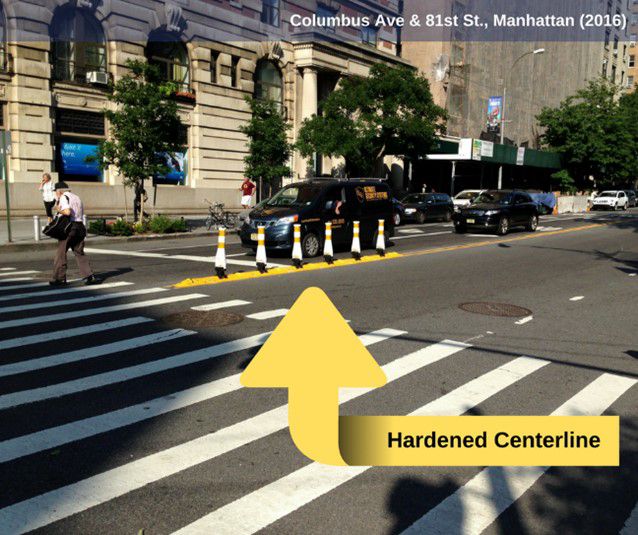
The Department of Transportation and Engineering (DOTE) also plans to work with neighborhood groups to develop so-called “artistic” sidewalk bump-outs to give pedestrians a protected lane in high-risk areas. The neighborhoods will design the bump-outs and take “creative ownership of their street spaces,” according to city officials.
“It is exactly this kind of work that provides us the opportunity to measure and expand the innovations that make a difference for our residents,” said Mayor Aftab Pureval. “We are here to stand with our residents and community councils who have demanded progress, as we put action behind our commitment to pedestrian safety.”
Cincinnati has seen a jump in the number of pedestrians being struck by motor vehicles in recent years. Drivers struck 305 pedestrians in Cincinnati last year alone; seven of them died.
There were 13 pedestrians hit on Warsaw Avenue in East Price Hill during the past three years. DOTE will install speed cushions to combat that trend.
“Cincinnati’s future success depends on the city’s ability to support diverse, walkable and healthy neighborhoods where residents feel safe,” Pureval said.
“These issues are affecting communities across Cincinnati,” he added, saying these situations can “cost people everything.”
For City Council member Mark Jeffreys, the issue isn’t just about creating more vibrant neighborhoods. There’s a “more human element” that highlights the effects of speeding and dangerous driving throughout Cincinnati’s 52 neighborhoods, he said.
A driver killed Jeffreys’ mother-in-law three years ago.
“There are graduations that will not be attended, weddings that are not attended, birthday parties that are not celebrated,” Jeffreys said. His own daughter graduates from Walnut Hills next year: “My mother-in-law will not be there.”
Jeffreys recently hosted a “Safer Streets Now” forum to gather community feedback on potential solutions and identify problem areas. The input helped inform some of this plan, Pureval said.
Pureval and Jeffreys joined a collection of city leaders and community advocates Thursday at Third Presbyterian Church on McHenry Avenue, a heavily trafficked area in East Westwood. Besides the church, the site also has a playground and basketball courts. There’s a bus stop and several apartment buildings in the area.
Many drivers speed through the area, causing concern for community leaders like Rodney Christian, who said drivers need to realize people live there and slow down.

Also at the press conference were the parents and family members of Gabriella “Gaby” Rodriguez, a 15-year-old who died in September 2018 after being hit by two drivers on Harrison Avenue.
The Western Hills High School student was crossing the street to catch her bus around 6:45 a.m. when a driver struck her and fled the scene.
Since the passing of their daughter, Shawna and Eduardo Rodriguez have pushed the city to enhance its pedestrian safety efforts.
Shawna teared up and said she was “over the moon” when she found out the city planned to add a set of speed cushions on Harrison Avenue near the site of Gabby’s death.
“Maybe if they would have been there three years ago, maybe my daughter would still be here,” she said.
Pureval thanked the Rodriguez family for continuing to tell their story and bring attention to the issue even though it may “reopen the trauma” every time they’re forced to retell it. The mayor credited their efforts for helping make the announcement possible.
“I want every kid to go to school safely, to catch their bus safely,” Shawna said. “I just know it’s going to make a difference.”
The installation of the first 10 speed cushion projects will take place at the following locations:
Reading Road: Hickman to Shuttlesworth in Avondale
Warsaw Avenue: Grand to McPherson in East Price Hill
Burnet Avenue: University to Kasota in Corryville/Avondale
Harrison Avenue: McHenry to Lafeuille in Westwood
Reading Road: Seymour to Shenandoah in Roselawn
Linn Street: Oliver to Clark in the West End
Winneste Avenue: Craft to WinMed Health in Winton Hills
Montgomery Road: Blair to Dana in Evanston
Glenway Avenue: Gilsey to Schiff in West Price Hill
Reading Road: Dorchester to Kinsey in Mount Auburn/Walnut Hills
DOTE intends to install two to four sets of asphalt speed cushions in each area.
Also, they’ll add them to other public centers as well, especially places where families and children gather, such as near Taft Elementary in Mount Auburn and South Avondale Elementary.
If approved by City Council, installation of the traffic calming tools this summer and early fall, according to DOTE Director John Brazina. Funding for the additional pedestrian safety measures comes from a one-time source, meaning it won’t be available again in the future.
While there are no guaranteed funds for additional safety items, the administration will make pedestrian safety a “top priority” during the upcoming budget cycle, Pureval said.
Speed cushions have worked in Cincinnati
DOTE installed its first speed cushions on Winneste Avenue in September 2021 as a pilot project to study whether the devices help slow traffic.
A “set” of speed cushions can include two to five cushions extending across a street, curb-to-curb. DOTE installs the speed cushions 300 feet to 400 feet apart to calm traffic within a specific area.
The pilot included four sets of cushions between Strand Lane and Craft Street.
The city chose that area because of the high number of pedestrian crashes during the last three years, according to Brazina. The area is home to Winton Hills Recreation Center and Winton Hills Academy elementary school.
The speed limit on Winneste is 25 miles per hour. But on a typical day, 95% of vehicles that used Winneste exceeded the speed limit, based on a DOTE traffic study. It showed the average speed was 37 miles per hour, and that 25% of those traveling on Winneste exceeded 40 miles per hour.
A pedestrian struck by a vehicle traveling at 40 miles per hour has an 80 percent likelihood of serious injury or fatality, according to the U.S. Department of Transportation.
After installation of the speed cushions, only 11% of vehicles traveling on that stretch of Winneste exceeded the posted speed limit.
Expansion of the program
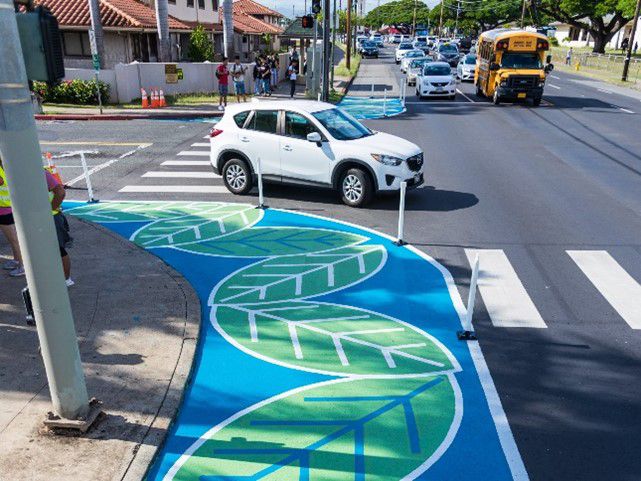
DOTE announced in early March its plans to expand the speed cushion program to 10 neighborhoods, using roughly $1.2 million allocated to pedestrian safety as part of the city’s budget process.
The city used a data-driven process to select and prioritize locations for speed cushions. DOTE staff investigates each location and scores it based on several factors:
History of pedestrian crashes
History of fatal/severe injury crashes
History of fixed object crashes (typically indicative of speeding)
Proximity to a neighborhood business district
Proximity to a school, recreation center, park, library, or other pedestrian generator
Volume of transit ridership at adjacent bus stops
Percent of zero-car households
The city also reached out to community councils to collect feedback on areas of concern. After scoring, each area gets ranked in order of priority.
The extra federal money changes the game a bit. DOTE plans to use the additional funding to add pedestrian safety measures to at least 30 neighborhoods this year.
DOTE hasn’t yet announced the added locations. However, the city expects to use a similar scoring system to identify them.
If bids come in lower than expected, or more funding becomes available, DOTE will continue to fund additional streets in order of priority.





